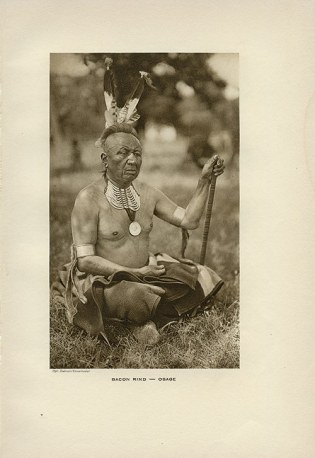Press Photo, 8 x 10, dated January 23, 1924 (by UNITED)
Official caption pasted on the back of photo:
RICHEST INDIANS GREET PRESIDENT.
The delegation of Osage Indians, in the Capital seeking additional allowances from their government held incomes from oil lands, call at the White House and pose with President Coolidge.
Unfortunately the caption does not identify any of the Osages in the photograph. We wonder if the man on the far left is not Chief Bacon Rind (see previous posts: http://www.dammingtheosage.com/osage-chief-bacon-rind/#comment-196 ). We welcome confirmation of that guess or any identification of others in the photo.
Money generated by the sales of drilling rights had made enrolled Osages “probably the wealthiest people on earth” (New York Times November 18, 1898). Since 1897, oil wells have been drilled in Osage County, Oklahoma. With extraordinary foresight, the tribe had reserved subsurface mineral rights even though the land had been allocated among the 2,229 enrolled Osages. . . . . By the 1920s, those Osages who owned headrights, or shares based on their or their ancestors’ listing on the official rolls of 1906 had become rich from oil revenues.” (page 280, Damming The Osage)
Note the peace medals the two Osage men wear. Genuine medals today are quite valuable, but there are a lot of copies. The otter skin ‘bandeaus’ they wear are characteristic Osage head wear.


